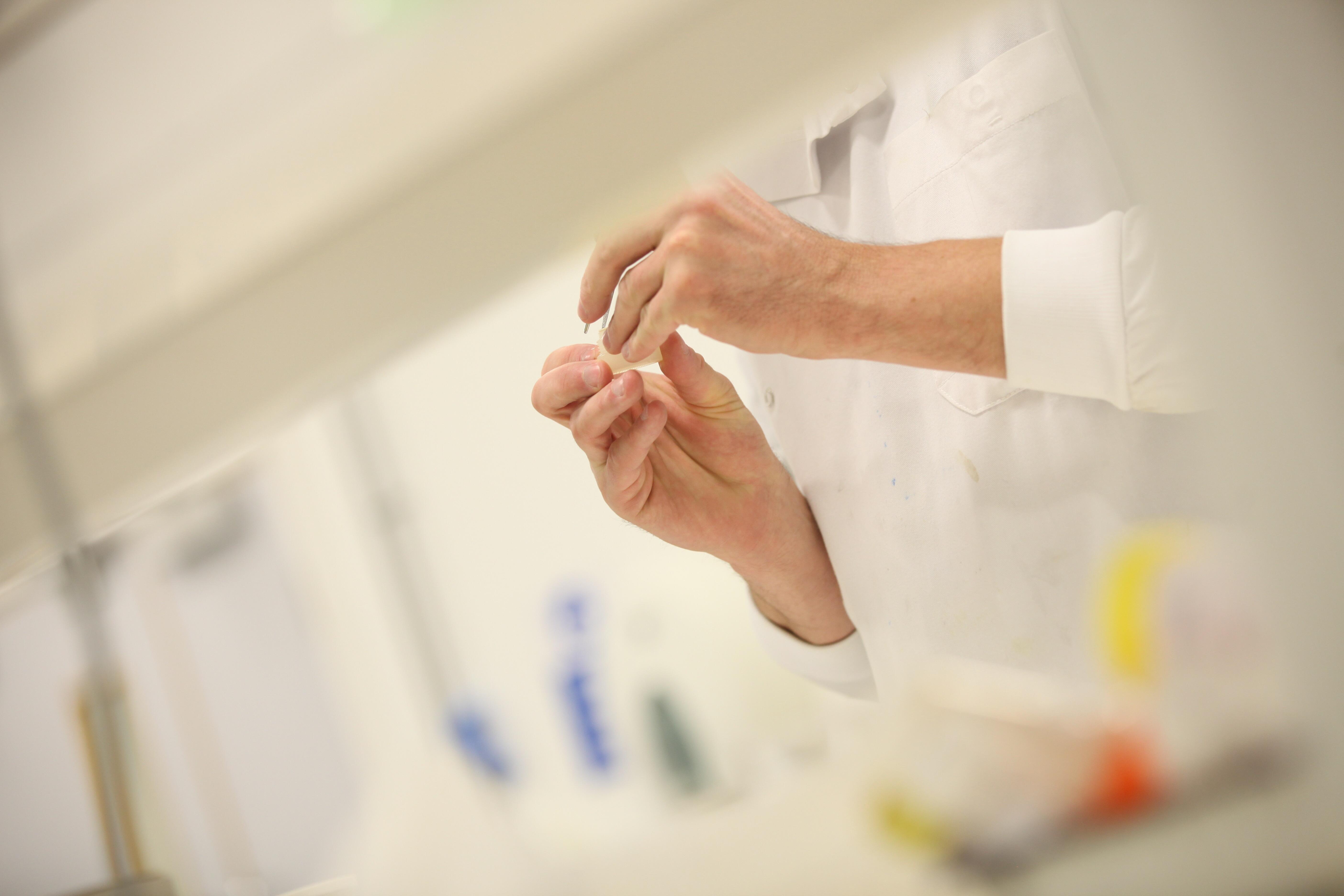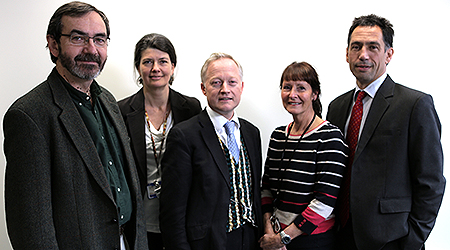
Wellcome Trust ISSF funding and LSTM matched funding was used to support new staff appointments within LSTM, and to enhance and develop research infrastructure, with the Centre for Applied Health Research and Delivery (CAHRD) being a major recipient.
Highlights associated with ISSF Funding
Publications:
Reimer LJ (ISSF), Thomsen EK, Tisch DJ, Henry-Halldin CN, Zimmerman PA, Baea ME, Dagoro H, Susapu M, Hetzel MW, Bockarie MJ, Michael E, Siba PM, Kazura JW (2013) Insecticidal bed nets and filariasis transmission in Papua New Guinea. N Engl J Med. 369(8):745-753·
Moxon CA (ISSF), Wassmer SC, Milner DA Jr, Chisala NV, Taylor TE, Seydel KB, Molyneux ME, Faragher B, Esmon CT, Downey C, Toh CH, Craig AG, Heyderman RS. (2013) Loss of endothelial protein C receptors links coagulation and inflammation to parasite sequestration in cerebral malaria in African children. Blood.122(5):842-851
Lindh JM, Goswami P, Blackburn RS, Arnold SE, Vale GA, Lehane MJ, Torr SJ (ISSF) (2012) Optimizing the colour and fabric of targets for the control of the tsetse fly Glossina fuscipes fuscipes. PLoS Negl Trop Dis. 6(5):e1661·
Casewell NR (ISSF), Wagstaff SC (ISSF), Wüster W, Cook DA, Bolton FM, King SI, Pla D, Sanz L, Calvete JJ, Harrison RA (2014) Medically important differences in snake venom composition are dictated by distinct postgenomic mechanisms. Proc Natl Acad Sci U S A. 2014 Jun 24;111(25):9205-9210
Kumwenda M, Munthali A, Phiri M, Mwale D, Gutteberg T, MacPherson E, Theobald S, Corbett L, Desmond N (ISSF) (2014) Factors Shaping Initial Decision-Making to Self-test Amongst Cohabiting Couples in Urban Blantyre, Malawi. AIDS Behav. 2014 [Epub ahead of print]
Funding:
- Renewal of Gates-funded IVCC and AWOL programmes, the latter with a major component using a novel mouse model for basic and translational research
- Reachout consortium. funded by EU to look at strengthening health systems through close-to-community services
- Cookstove project in Malawi funded by MRC
- MRC New Investigator Award – “Is targeting vascular remodelling by filarial parasites a viable anti-morbidity solution”
- CouNTDown programme for NTD implementation research funded by DFID (Adams, Reimer)
Health Impact:
- Development of innovative ‘tiny target’ control systems for tsetse flies (Torr)
- Discovery of a previously unidentified reservoir of Schistosoma infection in pre-school children (Adams).
- Introduction of intermittent preventive therapy during pregnancy as a WHO policy recommendation (Terlouw).
- Development and validation of a human challenge model for Streptococcus pneumonia (Glennie).
- Development of new monitoring and evaluation systems for malaria surveillance (Terlouw)
Examples of the use of ISSF funding to support research:
Malawi-Liverpool-Wellcome Trust Clinical Research Programme (MLW) is a major Trust funded activity managed through LSTM. Direct ISSF investment in MLW includes two key appointments to drive epidemiology (Peterson) and social science (Desmond). The investment into the operational research CAHRD initiative has provided expertise in Health Economics (Neissen), Statistics, Health Systems (Wang) and Complex Interventions (Torr, Hollingsworth) all of which are priority areas for MLW.LSTM has been working on a major programme of tsetse fly control with funding from BMGF. This programme has been led by Prof Mike Lehane who is retiring next year. To maintain and develop this important aspect of research and public health impact we have recruited Prof Steve Torr using ISSF funding, which has resulted in the funding being renewed by BMGF.
LSTM has a strong profile in Neglected Tropical Diseases (NTD) with major programmes in filariasis control (http://www.cntd.org/). Using ISSF support we have expanded this Centre to include other infections, with recent major funding obtained from DFID (CouNTDown) to support research on NTDs, with major involvement from Emily Adams and Lisa Reimer (both funded by ISSF on the Career Track scheme).
ISSF funding to underpin the professional fees on the Anson House major refurbishment has leveraged external and internal funding . A strategic collaboration with the University of Warwick as part of LSTM’s CAHRD initiative has generated further funds for new staff in Warwick committed to joint research with LSTM, with substantial funding already received through joint bids from funders such as the BMGF and DFID.
Throughout the previous ISSF funding cycle LSTM has made steady progress in the support of Public Engagement (PE) activities. Internally the establishment of a communications department has been essential in developing a strategic approach towards Public Engagement in LSTM. Internally, PE training is offered and the communications team plays an increasing role on key committees. Externally LSTM expanded its PE range of activities with a wide range of presentations, exhibitions and initiatives to schools, museums and Community Centres, as well as hosting visits to LSTM.
Public Engagement
LSTM’s improving and rapidly growing media visibility and social media presence are beneficial in creating attention for our various PE initiatives. For example, in 2012 the Trust funded an LSTM initiative on “Ethical concerns for health professionals, media and the public in promoting adequate and safe blood transfusion services in Africa: a case study of Ghana”. In 2013 we were supported to address "Scientists and Journalists Networked for Public Engagement on Environmental Health”.
LSTM is committed to public engagement and has organized 5 public talks; 2 TV/web broadcasts; 96 education/public visits; 3 workshops and 3 exhibitions based public engagement activities relating to WT projects since Oct 2011. Some examples include:

Bugs Bites and Parasites, a six-part documentary series, filmed over the past 10 months, focussing on the work of LSTM and the Royal Liverpool Hospital including overseas research. First weekly episode was broadcast on the Discovery Channel on 21 July 2013.
Filming tsetse flies and sleeping sickness research at LSTM’s Centre for Tropical and Infectious Diseases (CTID). The piece by CK Multi Media was in conjunction with New York University and took place in May 2013.
The Alistair Reid Venom Research Unit has hosted over 80 education/community group visits during this period, demonstrating how anti-venoms are being developed to treat snake bite.Creepy crawly workshops – four workshops help for the public at Liverpool World Museum over the last two years with two more planned for December 2014, focussing on vector biology work at LSTM.